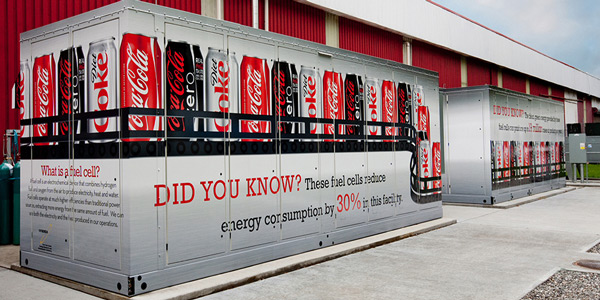By Rich Heidorn Jr.
New England’s offshore wind industry got another boost Wednesday as Connecticut officials announced they will purchase 200 MW of output from Deepwater Wind’s Revolution Wind project, adding to Rhode Island’s 400-MW procurement.
Rhode Island announced its selection of Revolution last month at the same time Massachusetts agreed to procure 800 MW from Vineyard Wind. (See Mass., R.I. Pick 1,200 MW in Offshore Wind Bids.)
“With demand for 1,400 MW of U.S. offshore wind announced in less than a month, there’s a golden opportunity for heavy manufacturing companies and shipbuilders to invest in American jobs, factories and infrastructure,” said Nancy Sopko, director of offshore wind for the American Wind Energy Association.
The Connecticut Department of Energy and Environmental Protection also announced awards for 52 MW of fuel cells and a 1.6-MW anaerobic digestion project Wednesday.
Maxed out on Offshore Wind
The 200 MW in offshore wind is equal to 3% of Connecticut’s load, the maximum officials were permitted to procure under state law. Combined, the renewable energy procurements are equal to 4.7% of Connecticut’s load.
The selected projects will seek to reach agreements on 20-year contracts with the state’s electric distribution utilities, Eversource Energy and United Illuminating. The contracts will be subject to approval by the Public Utilities Regulatory Authority.
The Revolution project will be in federal waters about halfway between Montauk, N.Y., and Martha’s Vineyard, Mass. Deepwater, majority owned by The D.E. Shaw Group, also is the owner of the 30-MW Block Island Wind Farm, the first U.S. offshore wind project. The company also is pursuing a project off New Jersey in a partnership with Public Service Enterprise Group.
As part of the Connecticut procurement, Deepwater agreed to economic development commitments in New London, including the investment of at least $15 million in the New London State Pier to allow “substantial” portions of the project to be constructed and assembled in the city. It also agreed to contract with a Connecticut-based boat builder to construct one of the project’s crew transfer vessels in the state. This project is expected to spur more than 1,400 direct, indirect and induced jobs, officials said.
Vineyard Wind, which had also bid into the Connecticut procurement, said it will continue work on its Massachusetts project, with construction projected for 2019 and full operations in 2021. “We also will continue to develop the remainder of our commercial lease site with the goal of providing New England states with additional wind energy solutions in the near future,” the company said in a statement.
Fuel Cells
Wednesday’s announcement will double the installed capacity of fuel cells in Connecticut to about 100 MW. State officials said the addition will put the state in the forefront of fuel cell adoption, along with California (210 MW installed capacity) and New York (20 MW).
The largest fuel cell (19.98 MW) selected was Doosan Fuel Cell America’s for the Energy and Innovation Park in New Britain. The project, the first phase of an economic development project, will use combined heat and power for heating and cooling businesses, including a Stanley Black & Decker manufacturing plant.
Others selected were Bloom Energy (a 10-MW project in Colchester) and FuelCell Energy (a 7.4-MW project in Hartford and a 14.8-MW project in Derby).
DEEP noted the average price in the fuel cell procurements was 11.6 cents/kWh, down from 15.6 cents/kWh in its 2011/12 procurement.
The Turning Earth Anaerobic Digestion Project in Southington will convert 54,000 tons of food waste and 15,000 tons of yard and woody waste into 90,000 cubic yards of compost and mulch annually.





